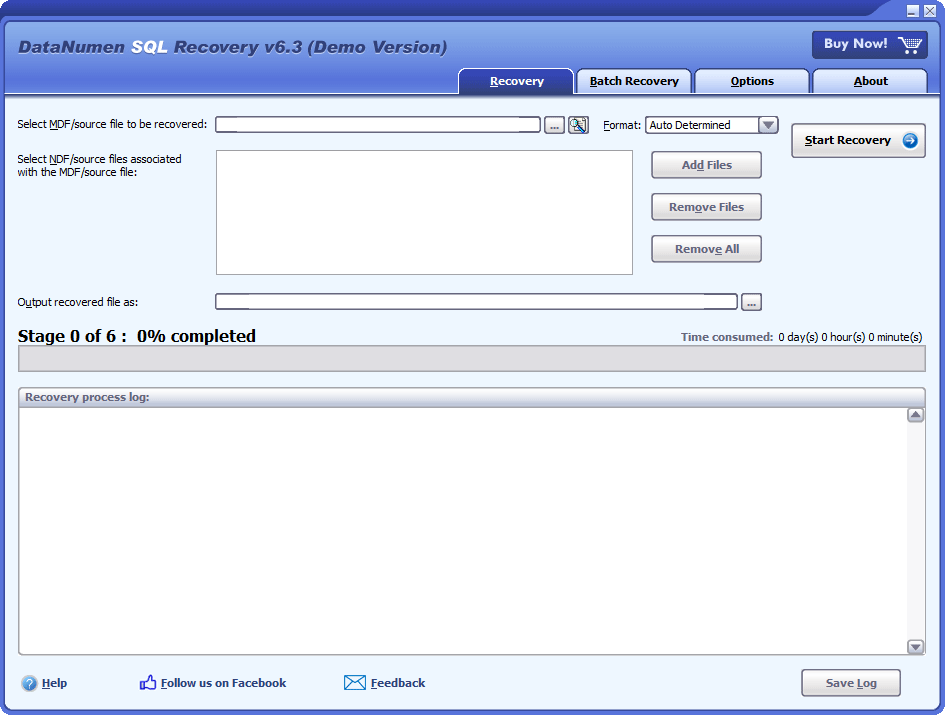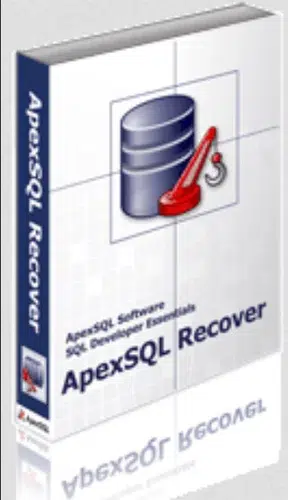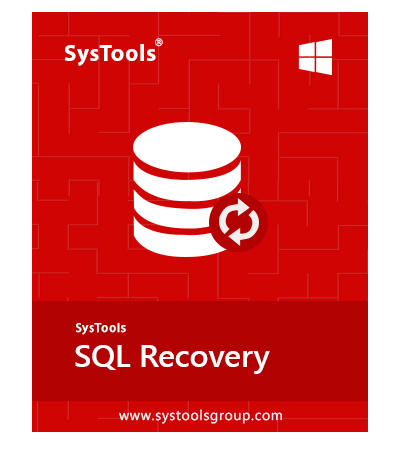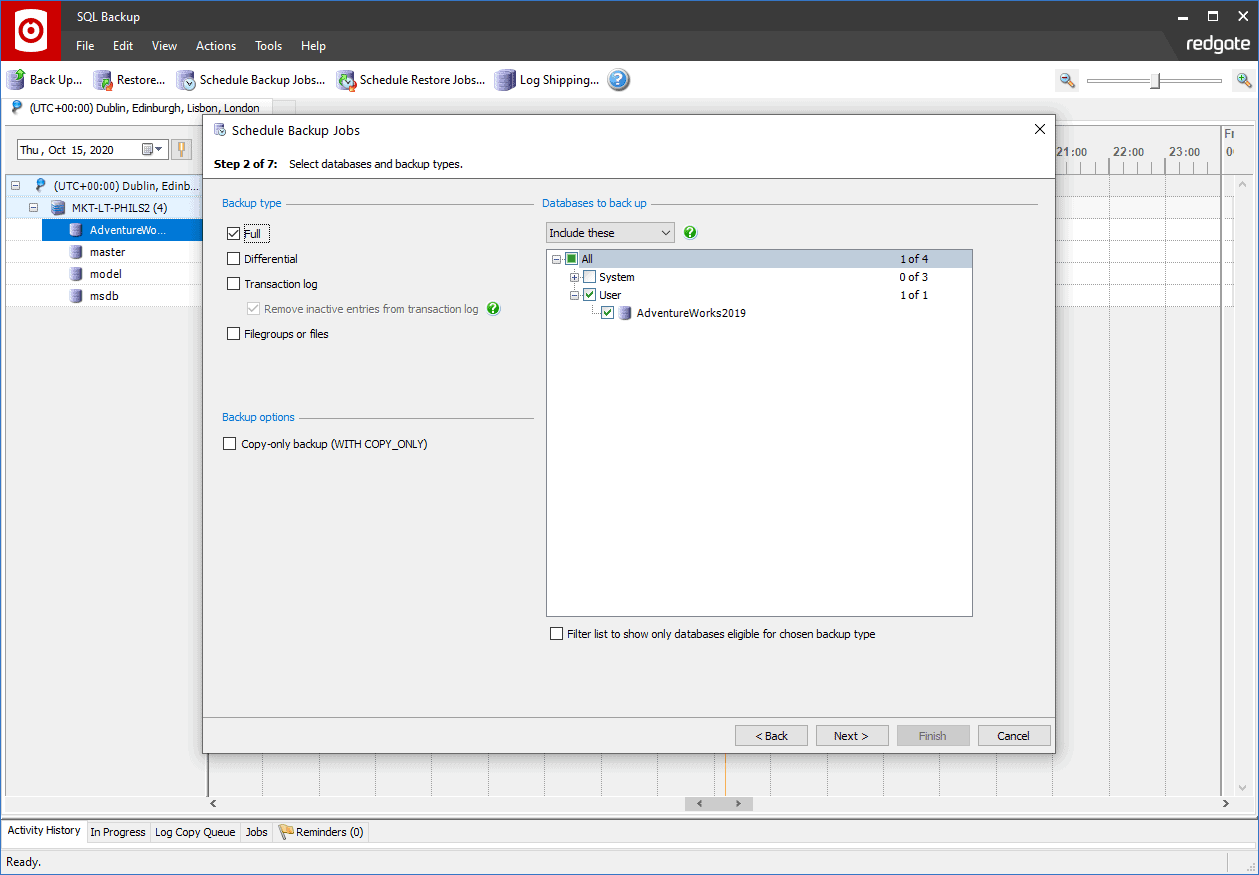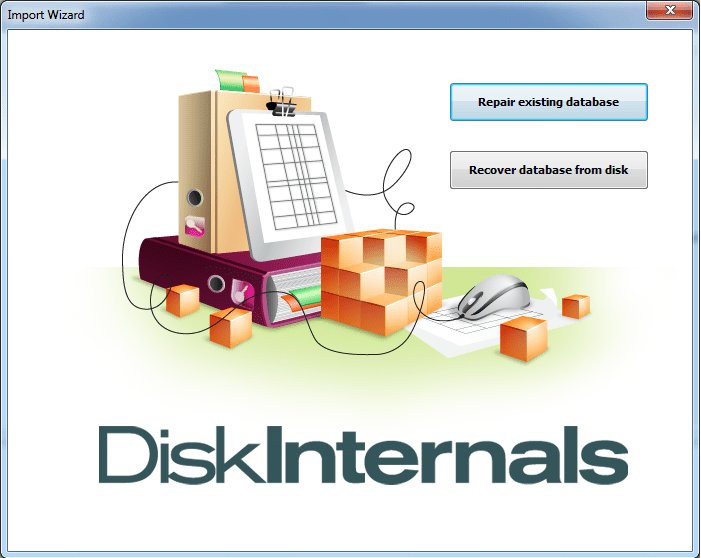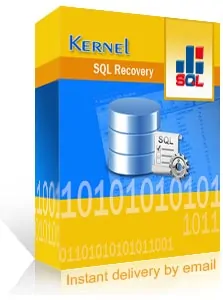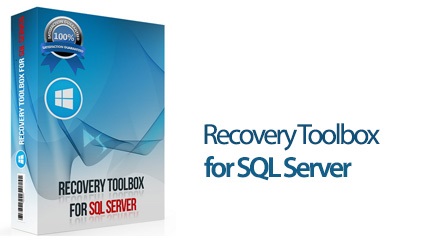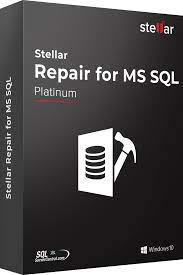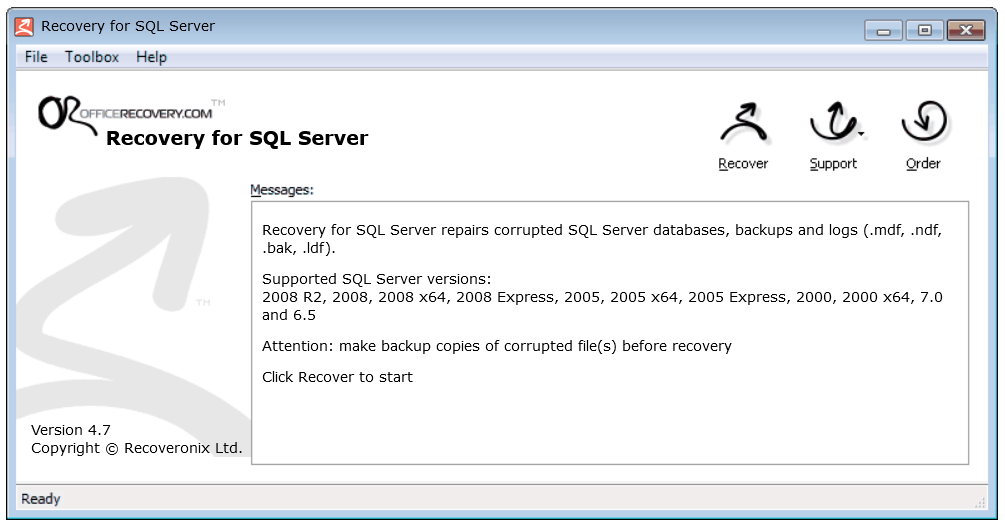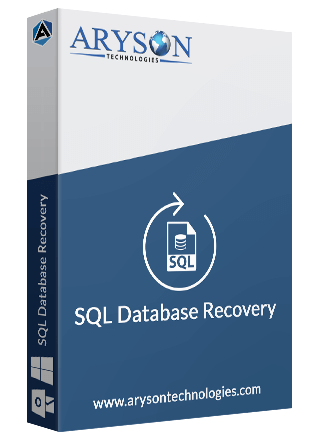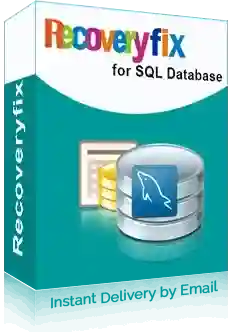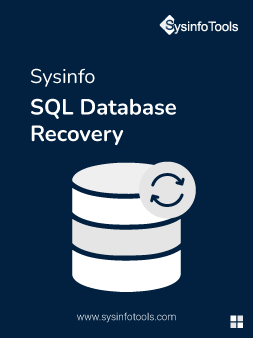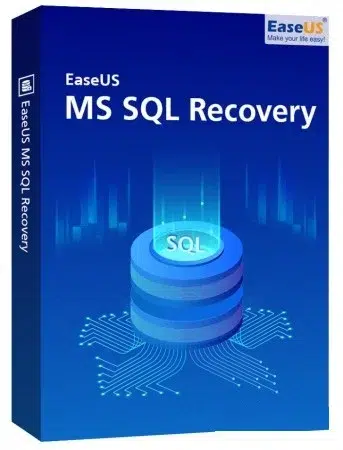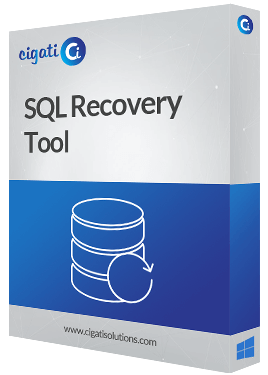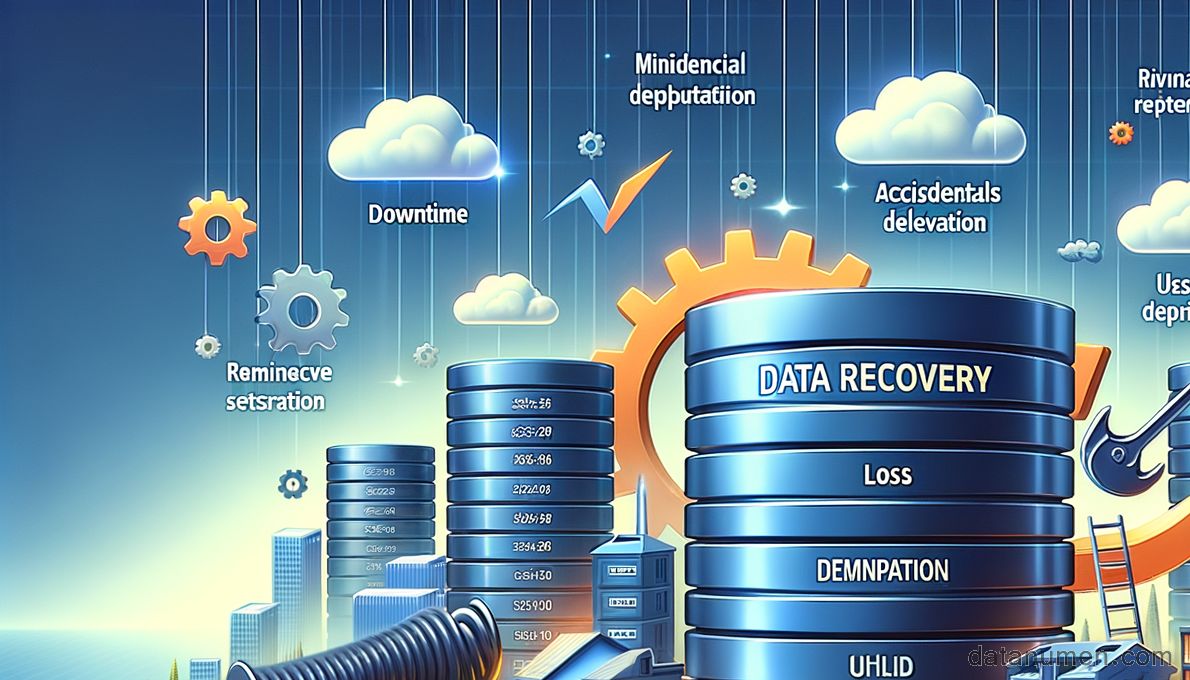1. Introduction
Importance of Data Recovery in SQL Server
SQL Server is a cornerstone for many organizations, responsible for handling complex transactions and storing essential data. Therefore, the importance of effective data recovery solutions can’t be overstated. Data loss can be a crippling event, leading to not only financial setbacks but also loss of reputation and legal repercussions. Having a robust data recovery tool for SQL Server ensures that an organization can recover from accidental deletions, corruption, or other forms of data loss, minimizing downtime and the associated costs.
Objectives of this Comparison
The primary objective of this comparison is to help readers make an educated decision when choosing an SQL Server data recovery tool. In an ever-growing market with multiple options, making the right choice can be overwhelming. This guide aims to simplify that process by providing a detailed overview of various recovery tools, analyzing their functionality, reliability, user experience, and pricing. By comparing these features, this guide offers a holistic view that will aid both IT professionals and business owners in selecting a tool that best suits their requirements.
2. DataNumen SQL Recovery
DataNumen SQL Recovery is a powerful tool designed for the recovery of corrupt MDF and NDF files of Microsoft SQL Server. The tool claims to have the highest recovery rate in the industry and is geared towards both small businesses and large enterprises. It also supports to recover various objects, including tables, views, triggers, rules, defaults, etc.
Pros
- High Recovery Rate: DataNumen boasts an exceptionally high recovery rate, making it a reliable choice for critical data recovery scenarios.
- Batch Recovery: The tool allows for batch recovery of multiple files, which can be a significant advantage when dealing with large-scale data loss.
- Support for Multiple SQL Server Versions: This tool is compatible with various SQL Server versions, making it versatile for different server environments.
- Special Features: Support to recover from disk images and virtual disk files.
Cons
- Cost Factor: The full-feature set comes at a relatively high price point, which might not be accessible for small businesses or individual users.
3. ApexSQL Recover
ApexSQL Recover is another robust tool in the domain of SQL Server data recovery. It aims to minimize data loss during the recovery process and is engineered to recover data from different types of corruption. It can recover deleted records, tables, and can even extract data directly from backups.
Pros
- Comprehensive Recovery: ApexSQL Recover offers a wide range of recovery options, from deleted rows to entire tables, making it a comprehensive solution.
- Log-Based Recovery: It can perform point-in-time recovery using SQL Server transaction logs, giving users an additional layer of data protection.
- Visual Interface: With its graphical interface, users can easily navigate through the recovery steps, making it accessible for those with limited SQL knowledge.
- Selective Recovery: The tool allows for the selective recovery of objects, thereby saving time and resources in restoring only the necessary items.
Cons
- Learning Curve: Despite its user-friendly interface, some features may have a learning curve, particularly for those who are not well-versed in SQL Server management.
- Cost: Similar to other advanced recovery tools, ApexSQL Recover comes at a relatively high price, which could be a barrier for small to medium enterprises.
- Limited File Support: Although adept at SQL database recovery, it may lack support for certain file types or database configurations.
4. SysTools SQL Recovery
SysTools SQL Recovery is a versatile recovery tool designed for MS SQL Server databases. The software focuses on retrieving data from corrupted MDF and NDF database files and boasts a straightforward user interface for ease of use. It can recover tables, views, stored procedures, and various other SQL database components.
Pros
- Wide-Ranging Support: It supports both MDF and NDF files, expanding its range of usability.
- Easy to Use: SysTools SQL Recovery is known for its user-friendly interface, making it approachable even for those with little SQL Server experience.
- Data Integrity: The tool maintains the integrity of data during the recovery process, ensuring that there is no alteration or loss of data.
- Preview Feature: Users can preview the recoverable items before executing the full recovery, enabling selective recovery and saving time.
Cons
- Pricing: Although it offers a range of features, the pricing can be on the higher side, especially for small businesses or individual users.
- Size Limitations: For extremely large databases, the tool may face performance issues, causing slower recovery times.
- Software Updates: Periodic updates can be infrequent, making it less adaptable to newer SQL Server versions or database configurations.
5. Red Gate SQL Backup Recovery
Red Gate SQL Backup Recovery is a specialized tool geared towards the restoration of SQL Server backups. With a focus on speed and reliability, this software can quickly restore corrupt or unreadable .BAK files to get databases up and running with minimal downtime.
Pros
- High-Speed Recovery: One of Red Gate’s most touted features is its ability to perform rapid backup recoveries, which is essential for business continuity.
- Integrity Checks: The tool automatically performs integrity checks on the recovered data, giving users peace of mind about the quality of the recovery.
- Log Reader: Comes with a log reader that enables point-in-time recovery, offering more control to the database administrator.
- User-Friendly Interface: The software has a simple, intuitive UI that is easy to navigate, making it accessible for users of all levels of expertise.
Cons
- Limited Scope: The tool is specifically designed for backup recovery, making it less versatile than other recovery tools that handle MDF and NDF files as well.
- Cost: Being a specialized tool, Red Gate SQL Backup Recovery can be expensive, particularly for smaller businesses or individual users.
- Complex Setups: In more complex SQL Server environments, users have reported difficulties in configuration, leading to a steeper learning curve.
6. DiskInternals MSSQL Recovery
DiskInternals MSSQL Recovery is a comprehensive tool designed to recover data from damaged SQL Server databases, including both MDF and NDF files. The software offers a complete set of features to tackle various kinds of corruption and data loss scenarios in SQL databases.
Pros
- Wide Range of Compatibility: DiskInternals supports a broad array of SQL Server versions, making it versatile for different kinds of setups.
- Advanced Scanning Algorithms: The software uses sophisticated algorithms to scan and recover data, even from severely corrupted databases.
- User-Friendly Interface: The GUI is designed to be intuitive, allowing users with minimal technical skills to operate the tool efficiently.
- Preview Function: It offers a preview feature that enables users to view recoverable data before initiating the recovery process, adding an extra layer of assurance.
Cons
- Cost Factor: While it offers a range of features, the full suite can be on the expensive side for small businesses or freelancers.
- Resource Intensive: Some users have reported that the tool can be resource-intensive, affecting the performance of other applications running simultaneously.
- Limited Support: Although it has many features, users have noted that customer support can be somewhat limited in addressing specific, complex issues.
7. Kernel for SQL Database Recovery
Kernel for SQL Database Recovery is a specialized software tool aimed at repairing and recovering SQL Server databases. The software is known for its powerful recovery algorithms and is capable of handling a variety of corruption scenarios.
Pros
- Multi-Version Support: The software is compatible with multiple versions of SQL Server, thus ensuring flexibility for the user.
- Selective Recovery: Kernel for SQL allows users to select specific elements like tables, triggers, and stored procedures for targeted recovery, which can be a major time-saver.
- Preview Feature: Like many top-of-the-line recovery tools, it also offers a preview function that lets users view the recoverable items before they proceed with the actual recovery.
- Quick Recovery: The tool is known for its speed in recovering large and complicated databases, making it a good choice for businesses with significant data needs.
Cons
- Complex Interface: While it’s feature-rich, the user interface could be intimidating for beginners or those without technical expertise.
- Pricey: The full set of features comes at a premium price, which might not be suitable for smaller organizations or individual users.
- Lack of Advanced Customization: While it offers many features, it lacks some of the advanced customization options available in competing tools.
8. Recovery Toolbox for SQL Server
Recovery Toolbox for SQL Server is a specialized tool aimed at restoring damaged or corrupt Microsoft SQL Server databases. Known for its user-friendly interface and quick recovery process, the tool is designed to cater to users of all technical levels, from beginners to experts.
Pros
- Ease of Use: The software offers a user-friendly interface that is simple to navigate, making it ideal for those who are new to SQL data recovery.
- Quick Recovery: The tool is engineered for speed, which allows for fast data recovery, saving both time and effort in urgent situations.
- Selective Recovery: It provides an option for selective recovery, letting you choose specific tables or items to recover, thus offering a tailored solution.
- Log Report: The tool generates a detailed log report of the recovery process, helping with auditing and understanding the operation better.
Cons
- Limited Advanced Features: The tool lacks some of the advanced recovery features available in higher-end alternatives, making it less suitable for complex recovery tasks.
- Incompatibility with Newer Versions: Some users have found that the tool is not always compatible with the latest versions of SQL Server, requiring workarounds.
- Price Point: While user-friendly, the tool can be expensive for smaller organizations or individuals who only require a one-time recovery.
9. Stellar Repair for MS SQL
Stellar Repair for MS SQL is a data recovery tool specialized in recovering database objects from corrupt or damaged MS SQL Server databases. It is designed to handle various issues and is equipped with features like database preview before recovery and saving recovered data in multiple formats, making it versatile and user-friendly.
Pros
- User-Friendly Interface: With an intuitive dashboard and straightforward instructions, users can operate this tool with minimal technical expertise.
- Multiple Export Options: The tool allows users to export the recovered data into various formats, including SQL Server Database, SQL Server Compatible Script, and CSV, adding to its flexibility.
- Preview Function: Users can preview recoverable objects before the actual recovery, enabling more selective data restoration.
Cons
- Pricey: One of the significant drawbacks of Stellar Repair for MS SQL is its high cost compared to some other tools in the market.
- Size Limitations: Some users have reported challenges with extremely large databases, indicating potential limitations in handling very large SQL Server databases.
- Resource-Intensive: The tool may require a considerable amount of system resources, which could slow down other operations on your computer.
10. Recovery for SQL Server
Recovery for SQL Server is a software utility developed to recover and repair corrupted SQL Server databases. The tool aims to restore all kinds of database components, including tables, stored procedures, and triggers. Known for its robust algorithms and compatibility with multiple SQL Server versions, it is a reliable choice for data recovery tasks.
Pros
- Comprehensive Recovery: This tool is adept at recovering a wide array of database components, making it versatile in handling different types of corruption issues.
- Version Compatibility: Unlike some tools, Recovery for SQL Server supports multiple versions of SQL Server, making it adaptable to different environments.
- Preview Feature: Before the actual recovery process, the software allows you to preview recoverable items, providing a helpful look into what you’ll be getting post-recovery.
- Automated Backup: The software offers automated backup features that make it easier to restore databases in future instances without manual intervention.
Cons
- Complex Interface: The interface might be challenging for users who are not tech-savvy or familiar with SQL databases, potentially steepening the learning curve.
- Resource Intensive: The tool can be resource-intensive, slowing down other operations on your system during the recovery process.
- Cost Factor: The software comes with a relatively high price tag, making it less accessible for small businesses or individual users who may only need occasional recovery.
11. Aryson SQL Database Recovery Tool
Aryson SQL Database Recovery Tool is a specialized utility designed for recovering and restoring SQL Server databases from both MDF and NDF files. It offers a range of features including object recovery and the ability to repair large-sized databases, positioning itself as a comprehensive solution for SQL database mishaps.
Pros
- Object-Level Recovery: One of Aryson’s standout features is its ability to recover specific database objects, giving users a higher level of control over what to recover.
- Supports Large Databases: The tool can handle large-sized databases efficiently, making it suitable for enterprise-level operations.
- Simple Interface: Its user-friendly interface is easy to navigate, which makes it accessible for users of all experience levels.
- Multiple Export Options: Aryson provides multiple export options, allowing you to save the recovered database in different formats or even directly into SQL Server.
Cons
- License Restrictions: The tool has some limitations in the free version, requiring a license for complete functionality.
- Installation Requirements: Some users have reported that the tool has specific installation requirements that can make setup a bit cumbersome.
- Occasional Performance Lags: Users might experience performance slowdowns while recovering extremely large or complex databases.
12. Recoveryfix for SQL Database Recovery
Recoveryfix for SQL Database Recovery is a software solution intended to repair corrupt MDF and NDF files of SQL Server databases. It is geared toward providing quick and effective recovery solutions with an emphasis on accuracy and data integrity.
Pros
- Advanced Scanning: Recoveryfix offers two levels of scanning—Standard and Advanced—to cater to different corruption scenarios, ensuring higher rates of data recovery.
- Preview Feature: Before you commit to any recovery, you can preview the recoverable items, which helps in selective data recovery.
- Supports Multiple SQL Server Versions: The tool is compatible with multiple versions of SQL Server, making it versatile for different environments.
- Log Report: A log report of the entire recovery process can be generated, which can be helpful for auditing and debugging purposes.
Cons
- User Interface: The tool’s interface is not as intuitive as some of its competitors, which may require a learning curve for new users.
- Price Point: Some users have expressed concerns over the software’s pricing, stating that it is on the higher side for the features offered.
- Limited Free Version: The free version has several limitations and is not fully functional, which can be a hurdle for some users wanting to try before they buy.
13. SysInfo Tools MS SQL Database Recovery Software
SysInfo Tools MS SQL Database Recovery Software is designed to recover data from damaged or corrupt SQL Server databases. The software aims to make the recovery process simple, efficient, and highly accurate, targeting both technical and non-technical users.
Pros
- Ease of Use: One of SysInfo’s standout features is its user-friendly interface, making it accessible even for those with limited technical skills.
- Versatile Recovery: The software supports both MDF and NDF files, covering a broad spectrum of SQL Server versions.
- Data Integrity: The tool has built-in mechanisms to maintain the integrity of the data during the recovery process, which is crucial for businesses that can’t afford any data loss.
- Selective Recovery: Allows users to select which objects or items they want to recover, providing more control over the recovery process.
Cons
- Speed: Some users report that the software can be somewhat slow when dealing with larger database files.
- Licensing Restrictions: The tool’s licensing model can be confusing, as it offers several tiers with varying capabilities.
- Resource Intensive: The software may require considerable system resources to operate optimally, which can be an issue on older hardware.
14. EaseUS MS SQL Recovery
EaseUS MS SQL Recovery is a dedicated data recovery tool for Microsoft SQL Server. Designed with both simplicity and efficiency in mind, the tool aims to help users recover their lost or corrupted database files swiftly and securely.
Pros
- User-Friendly Interface: EaseUS provides an intuitive interface that simplifies the data recovery process, making it ideal for users who may not be tech-savvy.
- High Recovery Rate: The software boasts a high rate of successful data recoveries, adding to its reliability for critical business applications.
- Multiple SQL Versions Supported: It supports a wide range of SQL Server versions, offering flexibility to users who have different server configurations.
- Preview Feature: The tool allows you to preview recoverable data before proceeding with the recovery, offering an added layer of assurance.
Cons
- Limited Free Version: The free version of the software has several limitations, which could require an upgrade to a paid plan for more comprehensive recoveries.
- Cost: The full version may be on the pricier side, making it less appealing for small businesses or individual users.
- Resource Usage: Similar to other powerful recovery tools, EaseUS MS SQL Recovery can be resource-intensive, which might slow down other operations on your computer.
15. Cigati SQL Recovery Tool
Cigati SQL Recovery Tool is a specialized software designed for the recovery of Microsoft SQL Server database files. It’s engineered to tackle various types of database corruption issues, offering a comprehensive solution for businesses and individual users.
Pros
- Multi-Functional: Not only does it recover tables, views, and stored procedures, but it also retrieves deleted records from the database.
- Compatibility: Supports various versions of Microsoft SQL Server, making it a versatile tool for different database environments.
- Secure Recovery: Cigati prioritizes data integrity, ensuring that the recovered files are free from any alteration or data loss.
- Batch Recovery: The tool offers a batch recovery option, allowing you to recover multiple files simultaneously, saving time and effort.
Cons
- Complex Interface: The user interface may be overwhelming for users who are not familiar with database recovery processes.
- Pricing Structure: While it offers powerful features, the cost might be prohibitive for small-scale users or those with a limited budget.
- System Requirements: The software has specific system requirements that may necessitate upgrades on older machines, adding to the overall cost.
16. Summary
16.1 Best Choice
DataNumen SQL Recovery stands out as the best choice for SQL Server database recovery, thanks to its impressive recovery rate and extensive range of features.
16.2 Overall Comparison Table
| Tool | Recovery Rate | Features | User Experience | Pricing | Customer Support | Extra Features |
| DataNumen SQL Recovery | High | Comprehensive | Excellent | $$$$ | Excellent | Batch Recovery |
| ApexSQL Recover | Medium | Moderate | Good | $$ | Good | Log Recovery |
| SysTools SQL Recovery | Medium | Comprehensive | Good | $$ | Good | Auto-Reconnect |
| Red Gate SQL Backup Recovery | Medium | Basic | Excellent | $$$$ | Excellent | Backup Recovery |
| DiskInternals MSSQL Recovery | Medium | Moderate | Fair | $$ | Average | Preview Option |
| Kernel for SQL Database Recovery | Medium | Basic | Fair | $ | Poor | N/A |
| Recovery Toolbox for SQL Server | Medium | Moderate | Good | $$ | Good | Log Recovery |
| Stellar Repair for MS SQL | Low | Rich | Excellent | $$$ | Excellent | Batch Recovery |
| Recovery for SQL Server | Low | Basic | Fair | $ | Poor | N/A |
| Aryson SQL Database Recovery Tool | Low | Rich | Good | $$$ | Good | Auto-repair |
| Recoveryfix for SQL Database Recovery | Low | Moderate | Good | $$ | Average | Partial Recovery |
| SysInfo Tools MS SQL Database Recovery Software | Low | Basic | Poor | $ | Poor | N/A |
| EaseUS MS SQL Recovery | Low | Comprehensive | Excellent | $$$ | Excellent | Partition Recovery |
| Cigati SQL Recovery Tool | Low | Rich | Fair | $$$ | Good | Batch Recovery |
Recommended Tool Based on Various Needs
- For Comprehensive Recovery: If you’re looking for the most robust feature set and high recovery rates, DataNumen SQL Recovery would be recommended.
- Budget-Friendly: If you’re constrained by budget, SysTools SQL Recovery or ApexSQL Recover offer good value for a moderate price.
- User Experience: EaseUS MS SQL Recovery scores highly on user experience and is an excellent choice for those who prioritize a user-friendly interface.
- Specialized Needs: If you have very specific requirements such as backup recovery or batch processing, Red Gate SQL Backup Recovery and Cigati SQL Recovery Tool can be the go-to solutions.
17. Conclusion
When it comes to selecting an SQL Server data recovery tool, various factors such as recovery rate, functionality, user experience, and pricing play significant roles. Tools like DataNumen SQL Recovery have demonstrated a strong performance, offering a rich set of features and high recovery rates. These tools would be suitable for organizations that prioritize robust and comprehensive recovery solutions.
On the other hand, budget-conscious users should consider SysTools SQL Recovery or ApexSQL Recover. These tools offer a good balance between affordability and functionality. They provide most of the essential features needed for SQL data recovery without breaking the bank.
User experience should also not be underestimated. A tool that’s complicated to use can delay recovery processes, adding to the stress of data loss. In this regard, EaseUS MS SQL Recovery stands out with its user-friendly interface, making it ideal for users who may not be tech-savvy but need reliable recovery options.
Specialized needs, such as backup recovery or batch processing, also dictate the choice of tool. If you find yourself in a niche requirement scenario, options like Red Gate SQL Backup Recovery or Cigati SQL Recovery Tool should be on your radar. These tools offer unique features that cater to specialized recovery needs.
In conclusion, choosing the right SQL Server data recovery tool involves a careful analysis of your specific requirements, budget, and preferred user experience. Armed with this information, you can make an informed decision to select the tool that’s best suited for your needs.
